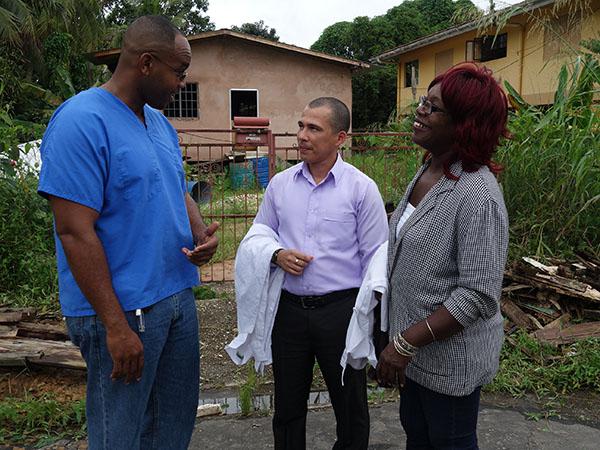
Trinidad and Tobago.—There is a region of Trinidad and Tobago whose name provokes curiosity at the very least. They say that if you were to ask its residents how it got its name, their faces would change, like that of someone who has been mourning for centuries.
Sangre Grande (literally Big Blood), is the largest town in the northeast of the island of Trinidad and there are many versions regarding the origin of its name.
What is certain is that it comes from the Spanish, and for centuries the legend has been told that the town was named following a battle that took place here between the indigenous population and the Spanish colonists, resulting in “mass extermination.”
However, others argue that this interpretation has no foundation in historical records, and point to other sources whose version has nothing to do with massacres. They claim the name originates from the late 1770s, when Spanish inspectors who were plotting the island in order to create a map, found that the waters of two of the tributaries of the nearby Oropouche River were red as blood.
Perhaps Trinidadians will never know for sure how the name came about, but for some time in Sangre Grande, where it rains every day, a new legend has been taking shape, this time regarding the battle for life. In this part of the Caribbean island, 12 Cuban health collaborators currently strive to ensure citizens have a better quality of life.
The population appreciates the difference; even those who like Colombian Keli Gámez were not born in the country, but live here. Both she and Ali Mahla, from Syria, on hearing that we were asking for the Cuban doctors and nurses, eagerly approached us to tell us that there are no better professionals. “They have the charisma to treat people, they provide a very good service to everyone and we feel like we are among family, because they are also good people.”
A few blocks down, Faaris Baksh has a shop, which we enter in the hope of hearing for ourselves what residents think of Cuba, and of course its people. He doesn’t hesitate to tell us that “the Cuban doctors are very useful here, because the intelligence, love, care, affection that they provide patients with and their concern is unmatched. It makes us feel comfortable.”
Every day the Sangre Grande General Hospital receives two Cuban doctors, three graduates in pharmaceutical sciences and seven in nursing. We speak to Trinidadian Dr. Ivo Cordice, who lives in Sangre Grande, and to our surprise studied in Cuba.
“It was through the training that I received in your country that I noted the huge difference between medicine over there and here; while you focus on prevention, over here we focus on the cure. It's something we are attempting to change. I went to study in Cuba precisely on my birthday in 1998, and it was the best gift, if I could do it again, I would not think twice.”
Despite language barriers posed to the Cuban professionals on having to communicate in a foreign language, it is evident that they have made an unequalled difference to the quality of care in the region, with improved health indicators, the head of the Cuban medical brigade in Sangre Grande, Nurse Wilber Matos Borges, told Granma.
“Usually we are met with patients from other regions too, who come in search of a Cuban doctor. Also sometimes we see them in the registration area, asking first if there is any doctor from Cuba present before entering the hospital. That makes us proud.”
The Cuban medical professionals working today in Sangre Grande have also contributed to a reduction in the number of patients resorting to the private sector, a sign of the trust placed in them by the Trinidadian people.
The examples abound, such as that of Dr. Andisley Cubas Galán, top specialist in Nephrology, who has managed to improve the quality of life for many people receiving hemodialysis, by optimizing the resources that are available and working every day, including weekends.
Plasmapheresis treatment also began for the first time in this region with the arrival of the Cuban brigade (a procedure by which blood is extracted, treated and then returned to the patient). “This method is used successfully by our nephrologist, who, just like all professionals graduated from the Institute of Nephrology, is qualified and trained in this type of treatment. Today patients are grateful, because it is only applied here in private clinics and Andy made the possibility of using it in this hospital a reality,” Matos Borges explained.
One of the most complex services is gynecology. Nurse Lázara Loredo Rodríguez, who works in this area, knows this all too well. One of the biggest obstacles is that people lack prenatal health education, such that pregnant women arrive in labor at the emergency department without having received any prior medical care.
“Our therapy nurses also deserve our admiration, who during each work shift share their knowledge to improve the health of the Trinidadians, attempting to bridge the gaps that divide us in the professional field,” the head of the brigade concluded.
We continue our search for testimonies. Having asked once again regarding the name Sangre Grande, our interviewees’ faces light up as we change the subject and begin to talk about Cuba and its people.








